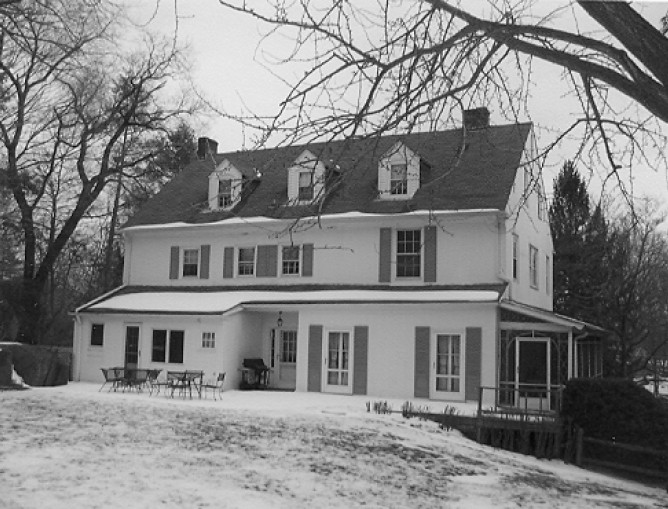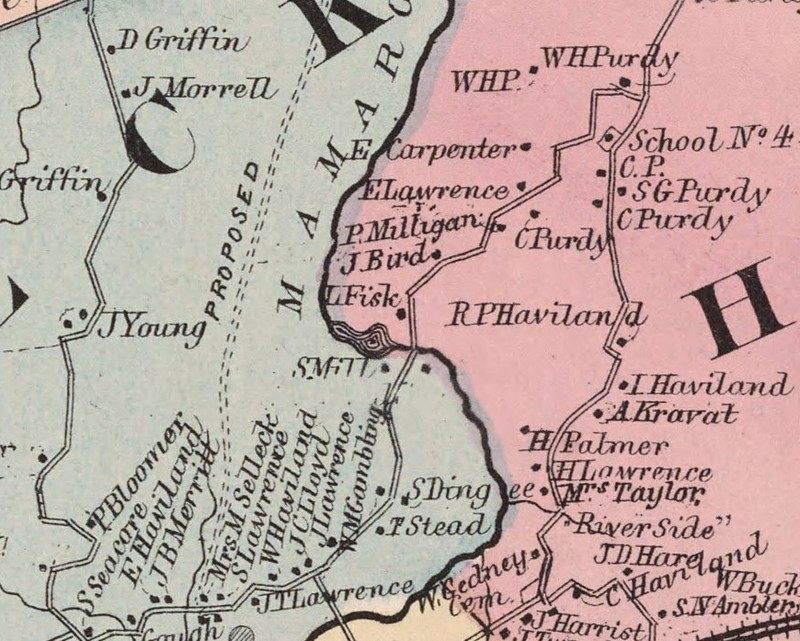Hadden-Margolis House
Introduction
Text-to-speech Audio
Images
Hadden-Margolis House

1867 map of Hadden-Margolis House

Backstory and Context
Text-to-speech Audio
Job Hadden Jr. constructed the Hadden-Margolis house around 1750. He acquired the land from his father, who was an early settler of the region. On April 29, 1785, he sold the property to Caleb Gedney. Although the exact date of construction is unknown, the house was on the property by the time of its sale in 1785 as confirmed by the language of the deed. In 1812, Caleb Gedney conveyed the house and property to Henry Gendey, a close relative.
The home was altered multiple times during the 19th century reflecting the economic and social changes in Harrison brought on largely by the railroad. On April 18, 1843, Henry and his spouse Ann Gedney sold the property to James Gray for $3,500. This was a significant increase from the $2,125 they paid for the home 31 years prior. By the 20th century two of the most notable owners of the home were Seymour Wenworth Bonsall, the inventor of the wardrobe trunk and William F. Bleakley, a state Supreme Court justice along with Westchester's first County Executive.
Through the 18th to 20th century the architecture of the home evolved. In the 18th century the house was a simple colonial vernacular building. In the 19th century, during the period of the Italianate style of architecture, the house acquired its large west addition and full second story. During this period the house became more decorative and included an ample porch that stretched across the front facade and wrapped around each end gable wall. During the 20th century Colonial Revival Period, the intent was to recapture the balance, symmetry and classic lines of traditional 18th century Georgian design.
Cite This Entry
Aaron Gebhardt on behalf of Westchester County Historical Society and Barbara Davis. "Hadden-Margolis House." Clio: Your Guide to History. January 20, 2021. Accessed April 3, 2025. https://theclio.com/entry/118223
Sources
- Williams, Gray. Jackson, Kenneth T.. Picturing Our Past: National Register Sites in Westchester County. Westchester County Historical Society.
- Shaver, Peter D.. Hadden-Margolis House. National Register of Historic Places. Published January 15th 2008.
- "Judge William F. Beakley Dies." The Herald Statesman (Yonkers) . .
- Arnold, Richard A.. "William F. Beakley Dies at 85; Jurist, First County Executive." Herald Statesmen (Yonkers) . .
National Register form
National Register form

